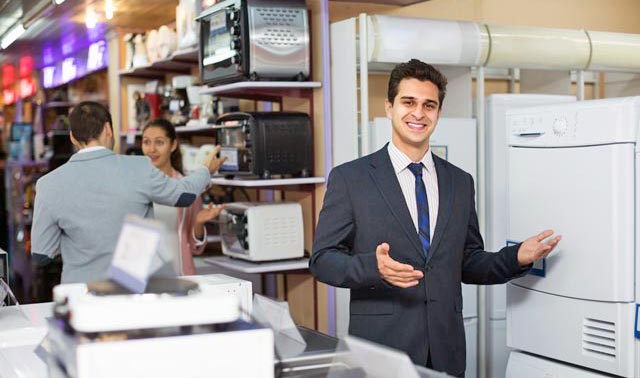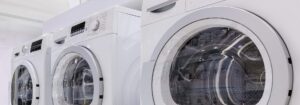The desire to replicate the café experience at home, including enjoying a well-pulled espresso, has driven the popularity of espresso machines. People appreciate the convenience of making their favourite drinks without leaving home.
Buying an espresso coffee machine can be a significant investment, and there are several factors to consider to ensure you get the right one for your needs. Here are some things to know before making a purchase:
Type of Espresso Machine
Consider whether you prefer a manual, semi-automatic or automatic machine. The level of control and involvement in the brewing process varies across these types.
Manual Espresso Machines
These machines require the user to manually control the entire espresso-making process. This includes grinding the coffee, tamping the grounds into the porta-filter, and manually starting and stopping the extraction process. Manual machines offer the most control but require a certain level of skill and experience.
Semi-Automatic Espresso Machines
Semi-automatic machines automate some aspects of the espresso-making process. They typically have a pump for maintaining consistent pressure during extraction. However, the user still has control over starting and stopping the extraction process. Semi-automatic machines strike a balance between control and convenience.
Automatic Espresso Machines
Automatic machines further automate the espresso-making process. They control the water flow and extraction time, making the brewing process more consistent. Users only need to add coffee grounds and press a button to initiate the extraction. Automatic machines are user-friendly and suitable for those who want a more convenient experience.
Pressure
Espresso machines use pressure to force hot water through finely-ground coffee to produce a concentrated coffee beverage known as espresso. The pressure is measured in bars, with one bar equal to atmospheric pressure at sea level.
Espresso machines typically operate at 9 bars of pressure. This pressure is considered optimal for extracting the flavours and aromas from the coffee grounds, resulting in a well-balanced and rich espresso. Ensure that the machine you’re considering meets this standard, as pressure is crucial for extracting the rich flavours in espresso.
Going below the standard 9 bars may result in under-extraction. The espresso may lack flavour and body, and the crema might be thin and lacking in texture.
Exceeding the standard pressure may lead to over-extraction. This can result in a bitter and over-concentrated espresso, and the crema may be dark and less stable.
Boiler Type
Espresso machines use different types of boilers to heat water for brewing espresso and steaming milk. The type of boiler can affect the machine’s performance, temperature stability, and the ability to perform simultaneous tasks like brewing and steaming.
Single Boiler
In a single boiler espresso machine, there is only one boiler responsible for both brewing espresso and steaming milk. These machines usually have a switch or temperature control to toggle between brewing and steaming modes. However, you cannot brew and steam at the same time with a single boiler, which may be a drawback for those who want more efficiency.
Double Boiler
Double boiler espresso machines have two separate boilers, one for brewing and one for steaming. Having dedicated boilers for each function allows for more precise control over temperature and simultaneous brewing and steaming. This is especially beneficial for those who make a lot of milk-based drinks like lattes and cappuccinos.
Heat Exchanger
Heat exchanger espresso machines have a single boiler, but they use a different mechanism to separate the water used for brewing from the water used for steaming. A heat exchanger tube runs through the boiler, allowing fresh water from the reservoir to be heated for brewing while steam is drawn from the top of the boiler for frothing milk. Heat exchangers provide the ability to brew and steam almost simultaneously, similar to double boiler machines.
Choosing the right boiler type depends on your specific needs, preferences, and budget.
Size and Capacity
The size of the water reservoir can vary significantly among espresso machines. A larger water reservoir reduces the frequency of refilling, but it may increase the overall size of the machine.
Consider the available space in your kitchen and the number of people you’ll be serving. Some machines are compact and suitable for small spaces, while others are bulkier and designed for high-volume use.
Grinder Compatibility
Some espresso machines come with built-in grinders, while others require a separate grinder. If the machine doesn’t have a grinder, make sure to budget for a quality one.
Ease of Cleaning
Espresso machines need regular cleaning. Check how easy it is to access and clean the different parts, such as the drip tray, porta-filter, and water reservoir.
Milk Frothing Capability
If you enjoy drinks like lattes and cappuccinos, consider whether the machine has a steam wand for frothing milk. Some machines have automatic frothers, while others require manual skill.
Ease of Use
Consider your comfort level with using the machine. Some people prefer a simple and straightforward operation, while others enjoy the customization options provided by more advanced machines.
Brand Reputation
Research the reputation of the brand and read reviews from other users. A reputable brand is more likely to produce a reliable and durable machine.
Budget
Espresso machines come in a wide range of prices. Set a budget based on your needs and preferences. Remember to factor in additional costs like a grinder, accessories, and maintenance.
Warranty and Customer Support
Check the warranty and the availability of customer support. A good warranty provides peace of mind, and responsive customer support can be valuable if you encounter any issues.
Energy Efficiency
Some machines are more energy-efficient than others. Look for machines with features like automatic shut-off to save energy when not in use.
User Reviews
Read user reviews to get insights into the real-world experiences of other espresso machine owners. This can provide valuable information about performance, durability, and any potential issues.
Taking the time to research and understand these factors will help you make an informed decision and choose an espresso machine that aligns with your preferences and needs.




